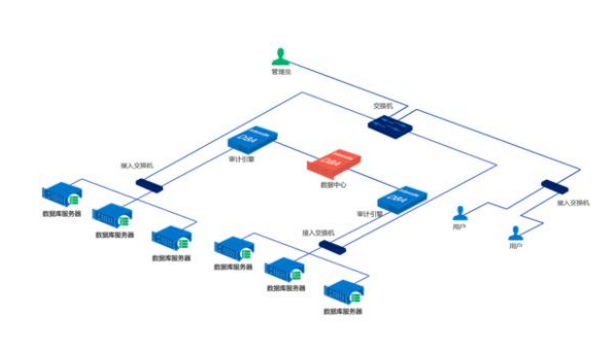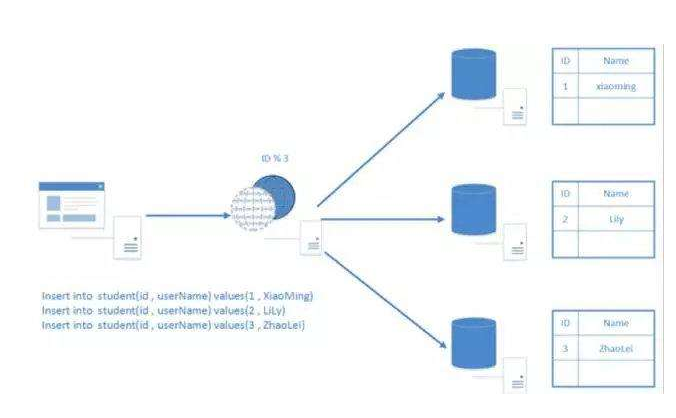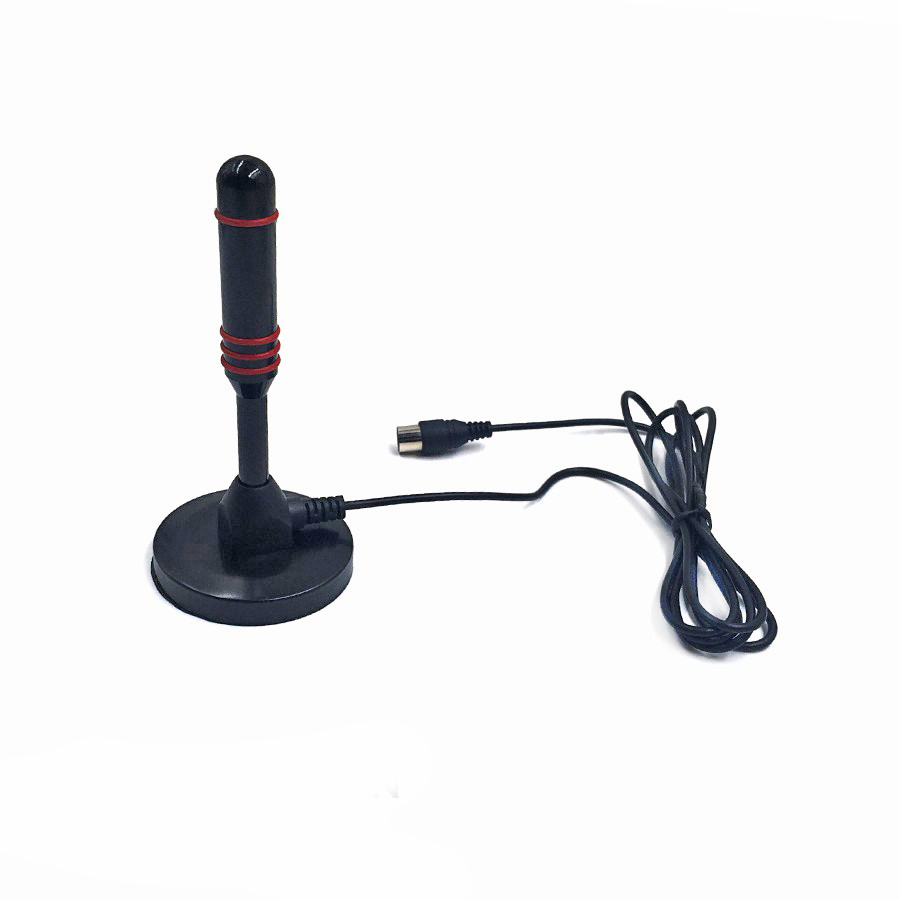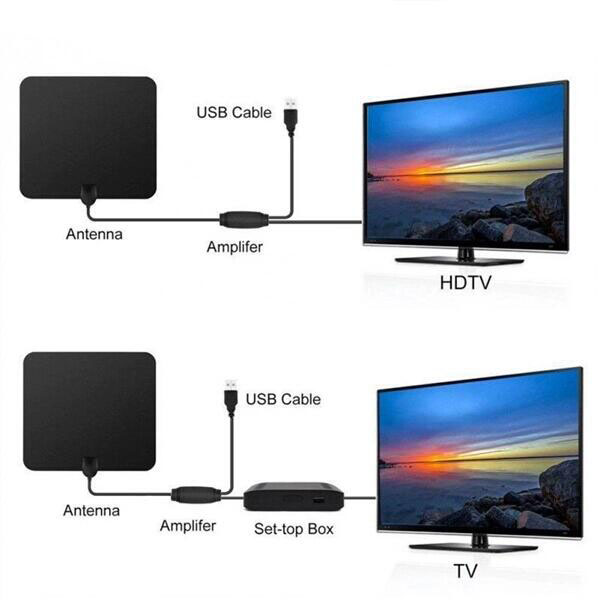The database engine is the core service for storing, processing, and protecting data. Use the database engine to control access and process transactions quickly to meet the needs of most applications in the enterprise that need to process large amounts of data. Use the database engine to create a relational database for online transaction processing or online analytical processing of data. This includes creating tables for storing data and database objects (such as indexes, views, and stored procedures) for viewing, managing, and securing data. You can use SQL Server Management Studio to manage database objects and SQL Server Profiler to capture server events.
What are the commonly used database engines?Database engine
Microsoft JET (Joint Engineering Technologe) is a core element of the embedded database functionality provided by Access and Visual Basic. JET is a versatile relational database engine that can be used to process most small and medium-sized databases. The so-called database engine is an interface between the application and the database storage, which abstracts the specific and complex details of database-related memory management, cursor management and error management into a highly consistent and simplified programming interface.
The Jet database engine is contained in a set of dynamic link library (DLL) files that are linked to the Visual Basic program at runtime. It translates application requests into physical operations on .mdb files or other databases. It actually reads, writes, and modifies the database and handles all internal transactions such as indexing, locking, security, and referential integrity. It also includes a query processor that receives and executes structured query language (SQL) queries to implement the required database operations. In addition, the Jet database engine also contains a result processor. Used to manage the results returned by the query.

2.ODBC
Open DataBase Connectivity (ODBC, Open Database Connectivity) is a database access standard defined by Microsoft that provides a standard database access method to access databases on different platforms. An ODBC application can access both a database on a local PC and a database on multiple heterogeneous platforms, such as SQL Server, Oracle, or DB2.
ODBC is essentially a set of database access APIs (application programming interfaces), but programmers can access ODBC functions by accessing the database through ODBC without having to understand ODBC functions in depth. This is because development tools like Visual Basic provide some object encapsulation. The ODBC function.
3.OLE DB
OLE DB is the latest database access interface developed by Microsoft, which Microsoft defines as an ODBC successor. Similar to ODBC, OLE DB provides access to relational databases, and on the basis of this, it extends part of the functionality provided by ODBC. As a standard interface, OLE DB can access all types of data, including relational databases, dBase and other ISAM (index sequence access method) type files, and even E-MAIL or Windows 2000 Active Directory.
OLE DB applications can be divided into two types: OLE DB Provider and OLE DB Consumer. OLE DB users are applications that use the OLE DB interface, while OLE DB providers are responsible for access. Data source and provide data to OLE DB consumers via the OLE DB interface.
Database engine typeThe database engine you can use depends on how mysql was compiled at the time of installation. To add a new engine, you must recompile MYSQL. By default, MYSQL supports three engines: ISAM, MYISAM, and HEAP. The other two types, INNODB and BERKLEY (BDB), are also often available.

ISAM
ISAM is a well-defined and time-tested data table management method that is designed to take into account that the number of times the database is queried is much larger than the number of updates. Therefore, ISAM performs read operations quickly and does not consume a lot of memory and storage resources. The two main drawbacks of ISAM are that it does not support transaction processing and is not fault tolerant: if your hard drive crashes, the data files cannot be recovered. If you are using ISAM in a mission-critical application, you must back up all of your real-time data frequently. With its replication feature, MYSQL can support such backup applications.
MYISAM
MYISAM is the ISAM extension format for MYSQL and the default database engine. In addition to providing a large number of functions for indexing and field management that are not available in ISAM, MYISAM uses a table locking mechanism to optimize multiple concurrent read and write operations. The price is that you need to run the OPTIMIZE TABLE command frequently to recover the space wasted by the update mechanism. MYISAM also has some useful extensions, such as the MYISAMCHK tool for repairing database files and the MYISAMPACK tool for restoring wasted space.
MYISAM emphasizes fast read operations, which may be the main reason why MYSQL is so popular with WEB development: the large amount of data operations you perform in WEB development are read operations. Therefore, most web hosting providers and INTERNET platform providers only allow the use of the MYISAM format.
HEAP
HEAP allows temporary tables that only reside in memory. Residing in memory makes HEAP faster than ISAM and MYISAM, but the data it manages is unstable, and if you don't save it before shutting down, all the data is lost. HEAP does not waste a lot of space when data rows are deleted. HEAP tables are useful when you need to use SELECT expressions to select and manipulate data. Remember to delete the form after you have used it.
INNODB and BERKLEYDB
The INNODB and BERKLEYDB (BDB) database engines are direct products of the technology that makes MYSQL flexibility. This technology is the MYSQL++ API. When using MYSQL, almost every challenge you face comes from the fact that the ISAM and MYISAM database engines do not support transaction processing or support foreign keys. Although much slower than the ISAM and MYISAM engines, INNODB and BDB include support for transaction processing and foreign keys, which are not available in the first two engines. As mentioned earlier, if your design requires one or both of these features, you will be forced to use one of the last two engines.
- The Description of TV Antenna
-
In the Cable TV system, the task of the antenna is to receive the open channel TV signal or satellite TV signal in the air, and send it to the system for processing, transmission and distribution. Among them, the antennas receiving VHF and UHF open-circuit TV signals are called TV receiving antennas.
- TV receiving antenna is an important part of wireless TV signal receiving, and it is the gate for radio waves to enter the CATV system. There are two kinds of antenna: passive antenna and active antenna. The active antenna can make the antenna system realize high gain and high signal-to-noise ratio receiving.
The Picture of TV Antenna


TV Antenna outdoor,TV Antenna Indoor,TV Antenna at best buy,TV Antenna Booster,TV Antenna Amazon
Yetnorson Antenna Co., Ltd. , https://www.yetnorson.com
